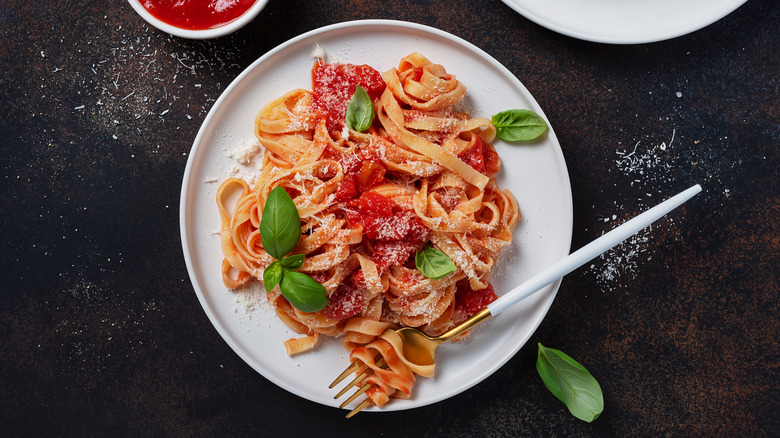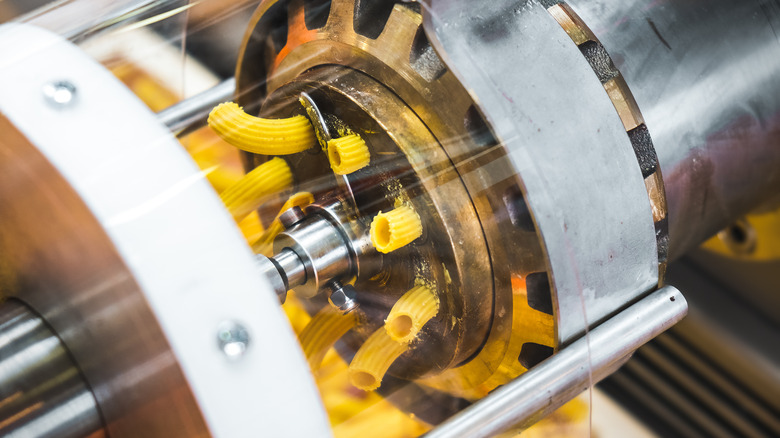The Real Reason Your Sauce Isn't Sticking To Your Pasta
Is there anything less aesthetically pleasing than a pasta dish where the sauce simply won't adhere to the noodles? Kind of like a visual version of the "oil and water" adage, when you get a watery pasta, it's very clear that something's not right. Of course, a soupy pasta dish is far from the most tantalizing experience for your palate. So, how can this food faux pas be avoided?
There are a few elements to the perfect pasta presentation. The first is, of course, the pasta. Cooking pasta correctly requires a few non-negotiables: the right pot size, the correct amount of salt, and consistent water temperature. Cooking until that perfect al dente status is definitely a requisite too.
Another key component of getting your sauce to cling to your pasta is making sure your sauce has the right ingredients. One frequently overlooked ingredient is fat. In addition to emulsion and acidity, the right fat content can really keep the sauce from slipping off. According to My Recipes, adding small bits of cold butter incrementally to your sauce is crucial. It is also a good idea to save about a half cup of pasta water while you cook. The remaining starch is a great binder, and when added after the sauce and pasta are incorporated, can give your dish just the right consistency (via Food and Wine).
All this is fine and good — and can even take your pasta to new heights — but how your pasta is produced can also affect how sauce sticks to it.
Bronze vs. Teflon plates
While the aforementioned factors can certainly affect your pasta sauce's sticking abilities, there's actually a more detailed explanation of why sauce doesn't adhere to some noodles.
According to Cook's Illustrated, it's more than just how much fat is in the sauce, how long the pasta is cooked, and the type of pasta used. It's about how your chosen pasta is actually pressed. Or, more specifically, what it's pressed through. Apparently, pasta can be manufactured via bronze or Teflon plates (Teflon being cheaper). Pasta that is pressed through bronze plates has a more textured surface, giving the sauce a substance that's easier to grab onto. Teflon-pressed pasta is slicker, and thus more difficult for sauce to adhere to. Go figure.
Though the specifics of manufacturing may not be found on a label, follow your eyes on this one: Teflon-produced pastas just look smoother, as opposed to the more coarse bronze-pressed noodles. Once you've discerned the difference, use pasta water accordingly. The rougher bronze-pressed pasta will require about 30% more pasta water added when the pasta meets its sauce.
So, get to know your pasta. Looks might not mean everything, but in the case of pasta and sauce, it all comes down to appearance.

